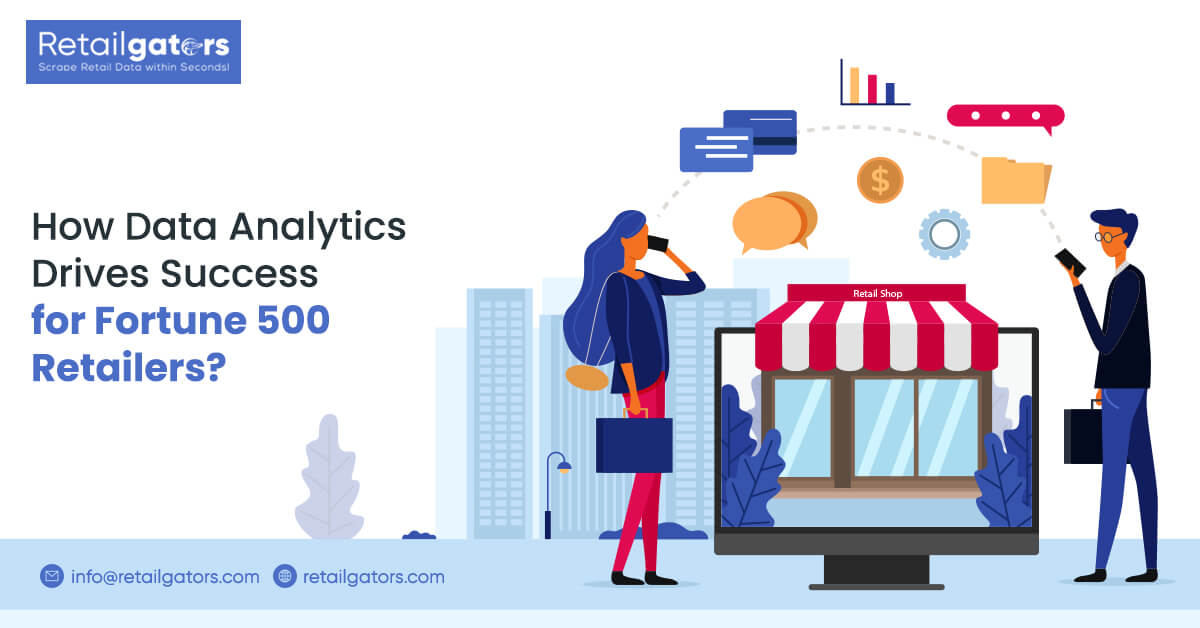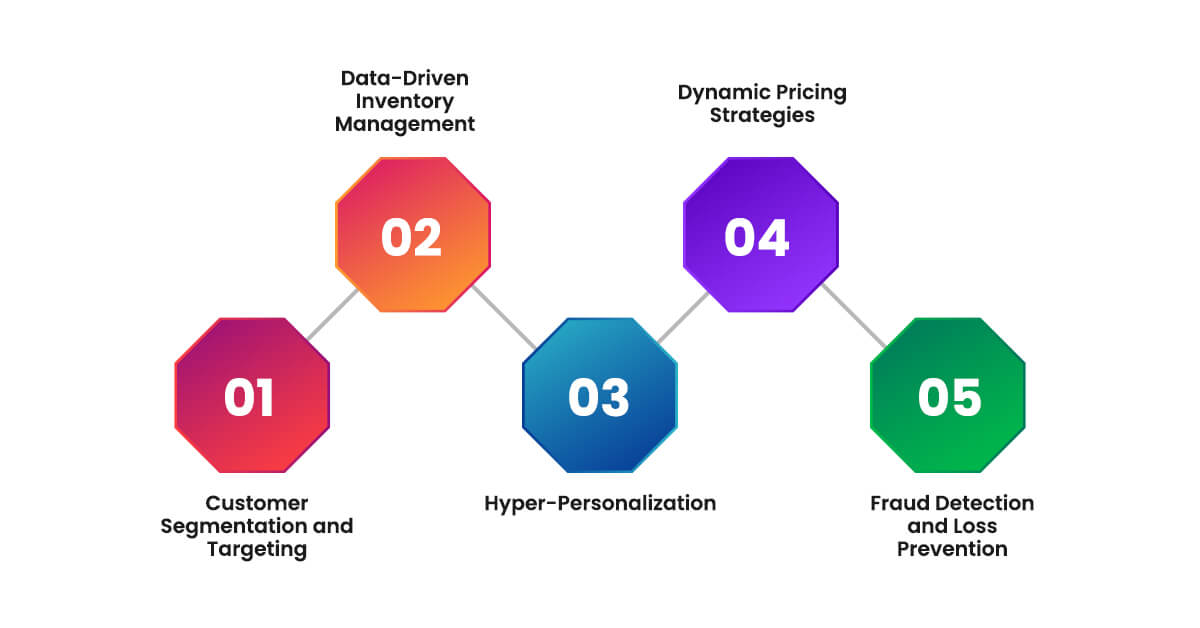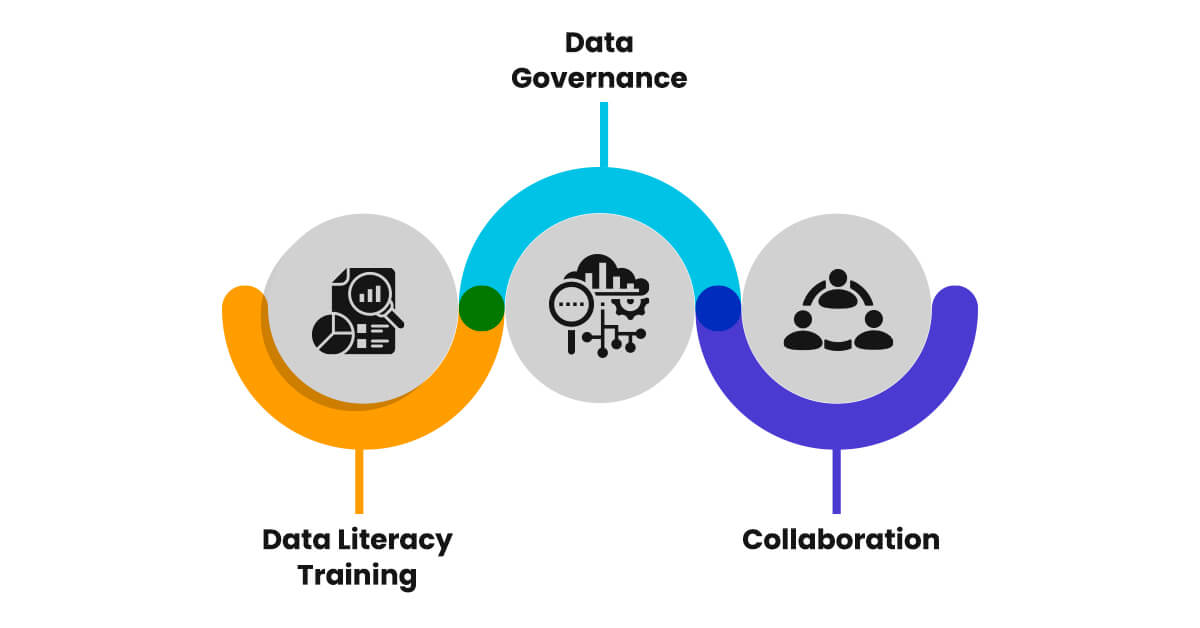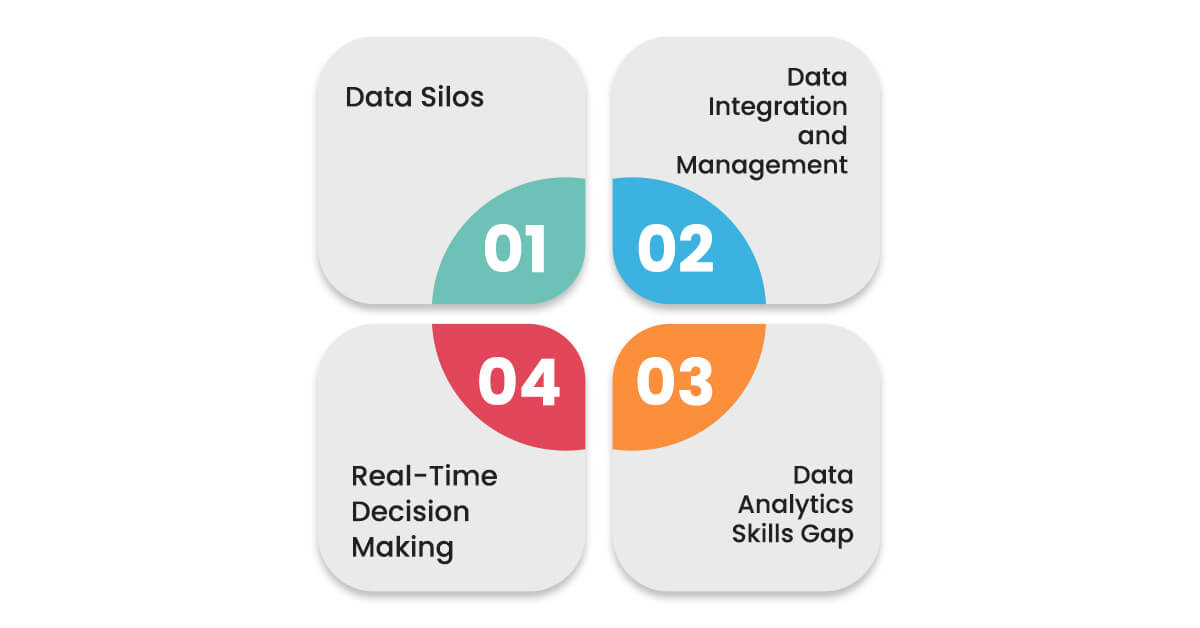
In the fast-changing world of retail industry, Fortune 500 companies always look for new and smart ways to stay ahead. With customers expecting more, online shopping becoming huge, and profits always being watched closely, there's a special tool these companies can use: data analytics. These tools offer growth opportunities and provide information and insights gained from data to grow, work better, and make customers happier. In this blog, we'll talk about how these Fortune 500 companies use data to improve in several areas, which helps them keep customers happy, improve profitability, and stay ahead of their competitors.
Why do Fortune 500 companies need data analytics solutions?
Fortune 500 retailers generate a vast amount of data from every customer interaction. This includes point-of-sale transactions, loyalty programs, online browsing behavior, social media sentiment, and in-store foot traffic patterns.
However, simply collecting data isn't enough. The real magic happens when we use advanced tools to understand this data. These tools can help find hidden patterns, spot trends, and guess what customers might do next. With this valuable information, retailers can make informed decisions in different parts of their business.
Data-Driven Strategies for Retail Success

Here's a glimpse into how Fortune 500 retailers can leverage data-driven analytics solutions to achieve remarkable results:
Customer Segmentation and Targeting
By looking closely at customer information (like age, what they've bought before, and what they look at online), retailers can divide customers into specific groups. This lets them create marketing campaigns and suggest products that match just what each group needs.
Data-Driven Inventory Management
Predictive analytics use past data and what's happening in the market to guess changes in what people want to buy. This helps retailers keep just the right amount of products in stock. By doing this, they avoid having too little or too much, which helps them save money and make more profit.
Hyper-Personalization
By analyzing customer information, shops can suggest products that customers might like, offer them special deals, and create exciting content on all platforms. This makes shopping more fun for customers.
Dynamic Pricing Strategies
By analyzing real-time market information and what competitors charge, stores can smartly change their prices. This helps them make the most money and stay ahead of the competition.
Fraud Detection and Loss Prevention
Analytics can spot trends in dishonest transactions and strange behavior. This allows businesses to take action and stop money loss before it happens.
The Core Components of a Data-Driven Analytics Solution
A comprehensive data analytics solution for Fortune 500 retailers should encompass the following key components:
Data Integration Platform
This system gathers information from various sources, such as cash registers, online shopping sites, customer management software, reward programs, and social media.
Data Cleaning and Transformation
Before we can study raw data, we must clean and change it to ensure it's correct and consistent. This means finding and fixing any missing information, sorting out any mistakes, and arranging the data in a certain way for different uses.
Data Warehousing and Data Lake
Data warehouses are like big storage rooms for organized data that we can reflect on and report on. Data lakes are huge storage pools for all kinds of data - organized and messy (like pictures, videos, and social media posts) - that we can use for advanced analytics and machine learning.
Business Intelligence (BI) Tools and dashboards
BI tools let us turn data into charts and pictures and create real-time reports and dashboards. They show us important information like how well the business is doing, what customers are doing, how sales are going, and what's happening in the market. This gives the people in charge the knowledge they need to make smart choices for the business.
Advanced Analytics and Machine Learning
Machine learning can help with tasks such as predicting who might stop using a service, suggesting products people might like, and spotting fraud. These smart features make our analysis tools even more clever.
Building a Data-Driven Culture

Just starting to use these tools isn't enough. Big companies need to create an environment where everyone, no matter their department, sees the importance of data and knows how to use it. This includes:
Data Literacy Training
Equipping employees with the skills to understand and interpret data.
Data Governance
Setting rules for gathering, keeping, and using data.
Collaboration
Ensure data experts and business leaders collaborate to turn data insights into actionable plans.
Implementing a Data-Driven Analytics Solution
While the potential benefits are undeniable, successfully implementing a data-driven analytics solution requires careful planning and execution.
Define Business Objectives
Clearly identify the business goals and challenges the data-driven solution aims to address. Do you want to keep more customers, increase sales, or improve your business? Knowing your goals clearly will help direct how you gather and analyze data.
Identify Data Sources and Needs
Consider all the sources where you might get data to help you reach your goals. This could be data from inside your company, like the cash register system and customer relationship software, as well as outside information like market research reports and social media studies.
Invest in the Right Technology
Opt for a data analytics platform that can grow with you and has everything you need for your business goals. Choose a cloud-based service on your computers or a mix of both.
Building a Data Culture
Data-driven decision-making requires a cultural shift within the organization. Invest in training and empowering employees at all levels to effectively understand and leverage data insights.
Continuous Improvement
Analyzing data is something you have to keep doing. Regularly check on your key goals, improve how you gather and look at data, and change your plans based on new things you learn to ensure your data use keeps working well and making a big difference.
Key Challenges Faced by Fortune 500 Companies

Despite their immense scale and resources, Fortune 500 companies encounter unique challenges in leveraging data:
Data Silos
Sometimes, data gets stuck in separate parts of the company. This can stop us from seeing the whole picture of a customer's experience or how the entire business runs.
Data Integration and Management
Collecting data from different sources, such as customer relationship systems, supply chain platforms, and social media, can be tricky and take a lot of time.
Data Analytics Skills Gap
It can be hard to find people who are skilled at analyzing huge amounts of data and using what they find to create effective strategies.
Real-Time Decision Making
Traditional data analysis can be slow, making it tough to quickly adapt to market changes or what customers do.
Conclusion
In conclusion, data-driven analytics solutions represent a transformative force for Fortune 500 retailers. By harnessing the power of data, these retail giants can navigate the complexities of the modern market with precision and insight, ensuring their continued success in a competitive landscape. As we move forward, the data-driven approach will increasingly become the standard, driving the evolution of the retail industry toward greater efficiency, responsiveness, and personalization. Service providers like Retailgators help businesses scrape and provide data-driven solutions that help you access data and provide actionable insights that are otherwise unavailable with traditional analysis.








Leave a Reply
Your email address will not be published. Required fields are marked